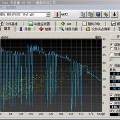Detecting Resident Space Objects (RSOs) and preventing collisions with other satellites is crucial. Recently, deep convolutional neural networks (DCNNs) have shown superior performance in object detection when large-scale datasets are available. However, collecting rich data of RSOs is difficult due to very few occurrences in the space images. Without sufficient data, it is challenging to comprehensively train DCNN detectors and make them effective for detecting RSOs in space images, let alone to estimate whether a detector is sufficiently robust. The lack of meaningful evaluation of different detectors could further affect the design and application of detection methods. To tackle this issue, we propose that the space images containing RSOs can be simulated to complement the shortage of raw data for better benchmarking. Accordingly, we introduce a novel simulation-augmented benchmarking framework for RSO detection (SAB-RSOD). In our framework, by making the best use of the hardware parameters of the sensor that captures real-world space images, we first develop a high-fidelity RSO simulator that can generate various realistic space images. Then, we use this simulator to generate images that contain diversified RSOs in space and annotate them automatically. Later, we mix the synthetic images with the real-world images, obtaining around 500 images for training with only the real-world images for evaluation. Under SAB-RSOD, we can train different popular object detectors like Yolo and Faster RCNN effectively, enabling us to evaluate their performance thoroughly. The evaluation results have shown that the amount of available data and image resolution are two key factors for robust RSO detection. Moreover, if using a lower resolution for higher efficiency, we demonstrated that a simple UNet-based detection method can already access high detection accuracy.
翻译:标题翻译:一种用于单帧空间图像中自动检测居住空间物体轨迹的模拟增强基准测试框架。
摘要翻译:检测居住空间物体(RSO)并防止其与其他卫星发生碰撞至关重要。近年来,当有大规模数据集可用时,深度卷积神经网络(DCNN)在对象检测方面表现出卓越的性能。然而,由于空间图像中 RSO 的数量很少,因此收集 RSO 的丰富数据是困难的。缺少充足的数据,就很难全面训练 DCNN 检测器,使其对于在空间图像中检测 RSO 有效,更不用说估计检测器是否足够健壮。不同检测器的缺乏有意义的评估可能会进一步影响检测方法的设计和应用。为了解决这个问题,我们建议空间图像中包含 RSO 的图像可以通过模拟来补充原始数据的不足,以便更好地进行基准测试。因此,我们引入了一种用于 RSO 检测的新型模拟增强基准测试框架(SAB-RSOD)。在我们的框架中,通过充分利用捕捉真实世界空间图像的传感器的硬件参数,我们首先开发了一个高保真度的 RSO 模拟器,可以生成各种逼真的空间图像。然后,我们使用此模拟器生成包含多种不同 RSO 的图像并进行自动注释。随后,我们将合成的图像与真实世界的图像混合,用于训练,而仅使用真实世界的图像进行评估。在 SAB-RSOD 的支持下,我们可以有效地训练各种流行的对象检测器,如 Yolo 和 Faster RCNN,使我们能够全面评估它们的性能。评估结果表明,可用数据量和图像分辨率是稳健的 RSO 检测的两个关键因素。此外,如果使用更低的分辨率以提高有效性,我们证明一个简单的基于 UNet 的检测方法已经可以实现高度的检测精度。


